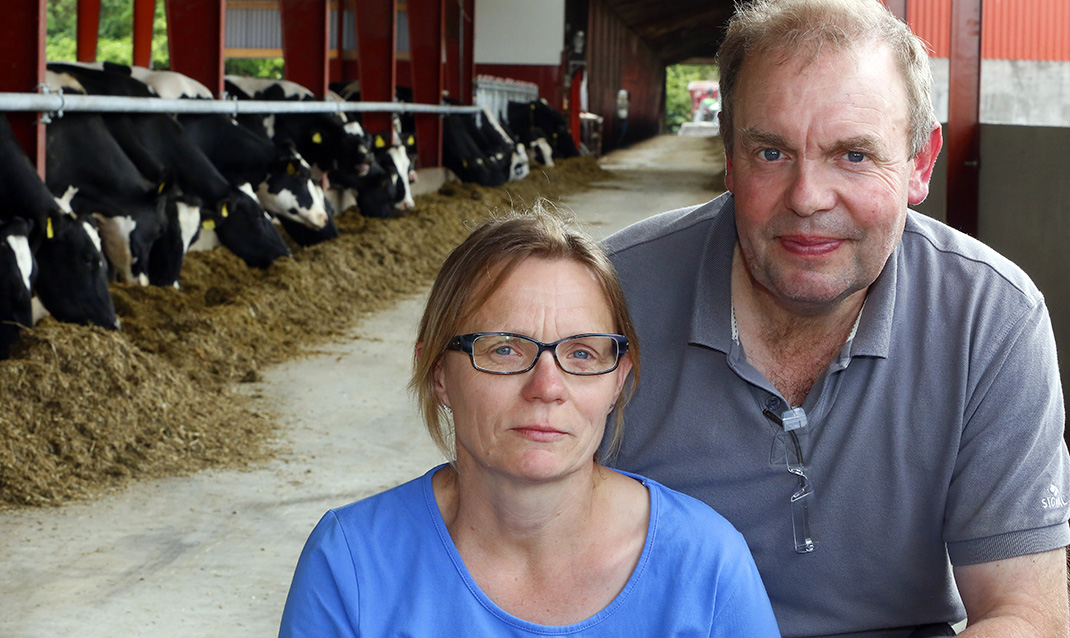“The right insemination time leads to greater success."
Who?
Per and Laila Rytter
Dairy farmers
Where?
Hadsund, Denmark
About the farm
- 205 cows, 220 female youngstock and 80 bulls
- Some of the youngstock are sold after calving
- Average production 10.220 kg milk with 3.98% fat and 3.37% protein
- 240 hectares of land under maize, grass and cereals
- 3 full-time employees
- Using Nedap for youngstock and dairy cows since 2013
Nedap solutions
Results
Know your cows
A better understanding of herd health
Per and Laila Rytter are happy users of Nedap CowControl™ with Heat Detection and Health Monitoring. Without incurring any extra work, reproduction results have improved, and they have a better understanding of their herd’s health.
Nedap COWcontrol™Per Rytter:
"We were simply missing too many heifers in heat."
With almost 500 cows and 240 hectares of land in use, there is always a massive amount of work to be done on Per and Laila Rytter’s farm. Heat monitoring had to be fitted in between all the other jobs. This worked well with the dairy cows, but the reproduction results among youngstock were disappointing. “The youngstock are on the same site, but on the other side of the farm,” Per says. “We were simply missing too many animals in heat.”
To stop the heifers’ calving age rising too high, Per and Laila decided a few years ago to impregnate the heifers by natural service. The heifers’ calving age dropped, but Rytter also saw many disadvantages in the use of their own covering bulls, such as the safety of the stockmen and the slow genetic progress in the herd.
Nedap Health Monitoring is the best method for us
So in November 2013 the dairy farmers started using Nedap COWcontrol™ with Heat Detection and Health Monitoring for their youngstock and their dairy cows. “We didn’t have a fertility problem with the dairy cows, but heat detection in the barn was taking too long,” Per explains. “It was difficult to identify which cow was in heat from the feed aisle, particularly in the evenings.”
The Rytters opted for Smarrag Neck because they offered the option of integrating Nedap Health Monitoring into the neck tag. “For us, monitoring feed intake is the best method of monitoring our animals’ health. We very soon realized that you have to act fast when you get an alert.” Per cites a case of mastitis as an example. “We got an alert that a cow’s eating behavior was abnormal. We didn’t take any notice to begin with, but during the evening milking we discovered the cow had an E. coli infection. If we had known then what we know now, we would have started treating her straight away. Fortunately she recovered.”
Substantial improvements
More accurate than the eye can see
Heat Detection has also proved its worth. Rytter has introduced two daily insemination times for the youngstock, for example. “Nedap COWcontrol™ with Heat Detection tells us when the best time is to inseminate. So we inseminate our first-calf heifers in heat at 8 a.m. or 5 p.m.” “That’s logical: a bull also chooses the right impregnation time. But we no longer have the downsides of using our own covering bulls, and monitoring for animals in heat doesn’t make extra work for us. We have complete confidence in Nedap COWcontrol™ .”
Nedap COWcontrol™ sees through cows in false heat
The Rytters’ positive experience is not only limited to their youngstock. The dairy farmers also achieved substantial improvements with their dairy cows despite the fact that they did not have a real fertility problem. “Thanks to Nedap COWcontrol™ with Heat Detection, I know which cows I need to inseminate. When you use visual heat detection, you run the risk of inseminating a cow displaying false heat. Later on these cows’ calving times could catch you unaware because they might have already been pregnant from an earlier insemination. With COWcontrol™, you can avoid these kinds of surprises, and this means you don’t have problems with dry periods being too short.”
Improved Heat Detection:
Better reproduction figures
Improved heat detection translates into better reproduction figures. Rytter only starts inseminating from lactation day 60. “We allow the cows plenty of time to recover from calving. But they do need to become pregnant as soon as possible after 60 days.” As soon as the system signals that a cow is in heat again, Rytter inseminates her straight away. The figures show that 65% of heifers and 52% of second-calf cows were inseminated in their first heat.
“The top 25%, which we like to use as a benchmark for ourselves, achieve percentages of 67% with heifers and 59% with second-calf cows,” Rytter says. The number of successful inseminations for older cows is also higher. Currently 49% of their cows take from the first insemination. “By accurately determining the optimum insemination time, I am sure we will be able to meet our target of 60% pregnant after the first insemination,” Per says confidently.
Know your cows
Smarttag Neck keeps cows healthy during vulnerable transition period
Rytter carries out pregnancy tests every month. When animals are identified as being pregnant, their neck tags are removed. “That way we don’t have to buy a tag for every cow. That saves money,” Per explains. The dairy farm currently has 60 neck tags in use. They want to increase the number by another 50 soon. “By fitting the cows with a Smarttag Neck from the dry period to conception, we keep our cows healthy during the most vulnerable period in the lactation cycle: the transition period. We are convinced of that!”






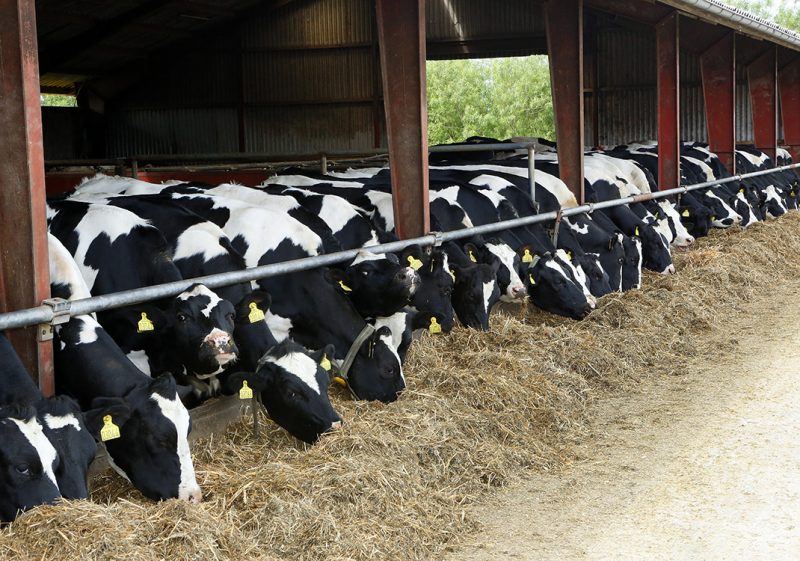
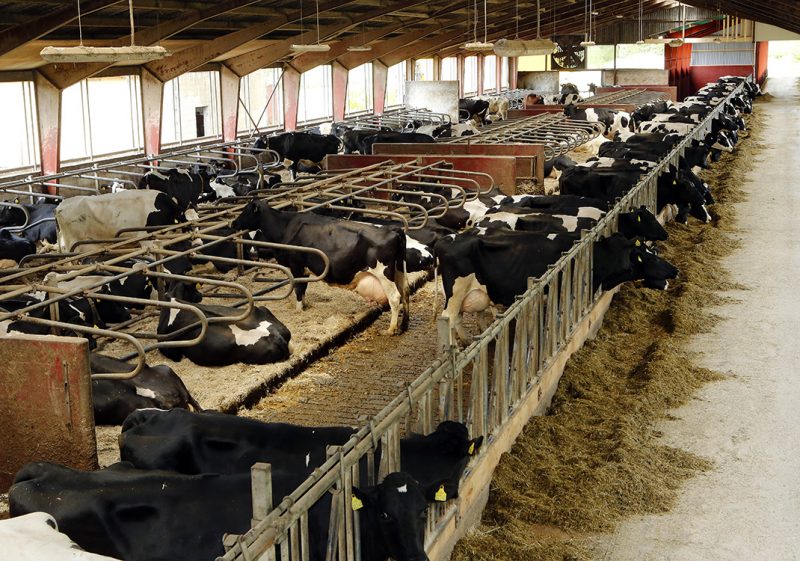
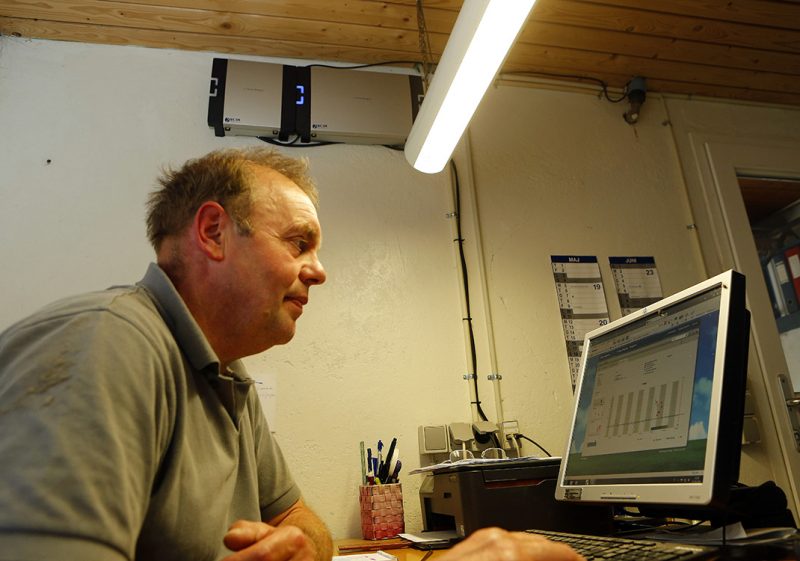
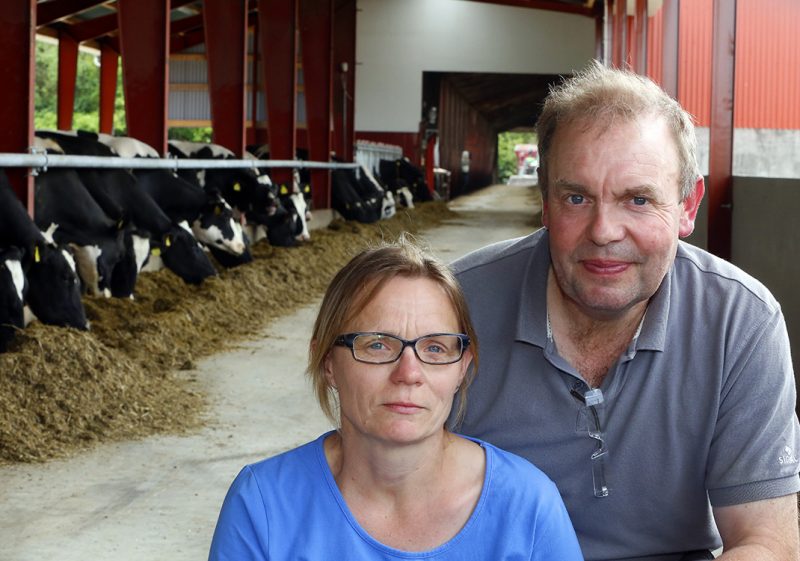
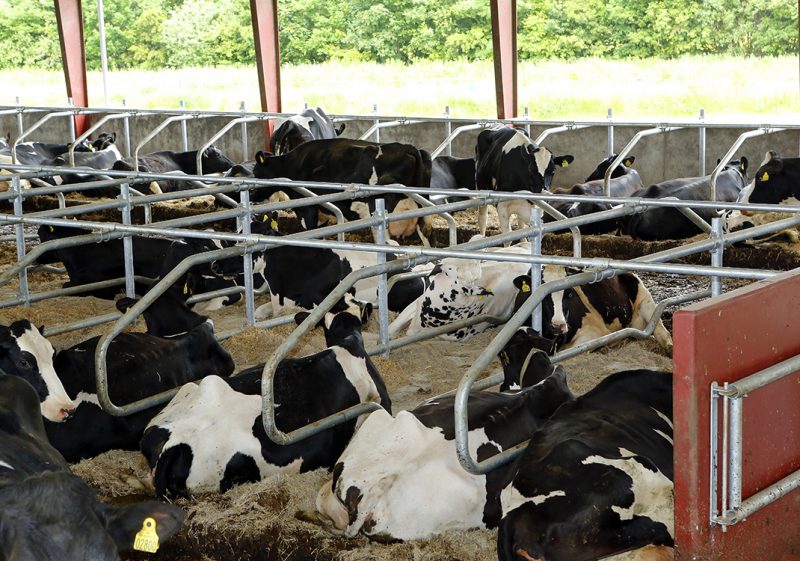
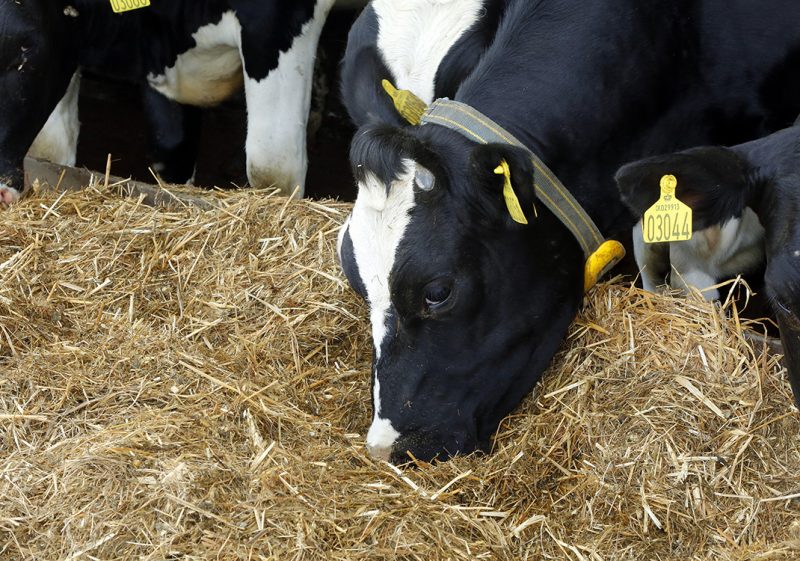
Search results for: ''
There are no results matching your criteria. Please try again with different criteria.
